After her recent appearance at the Falmouth Book Festival; author, art historian and art activist Katy Hessel speaks to Newlyn School of Art with a Q and A about her new book The Story of Art (Without Men). Find out how to add your favourite three female artists from history to our list at the bottom of this article!
“I’ll show you what a woman can do,” wrote baroque painter Artemisia Gentileschi in 1649. These are the first words of The Story of Art (Without Men) a compelling new book in which art historian Katy Hessel gathers, chronicles and sheds light on the overshadowed and overlooked female artists in art’s long and vibrant history. 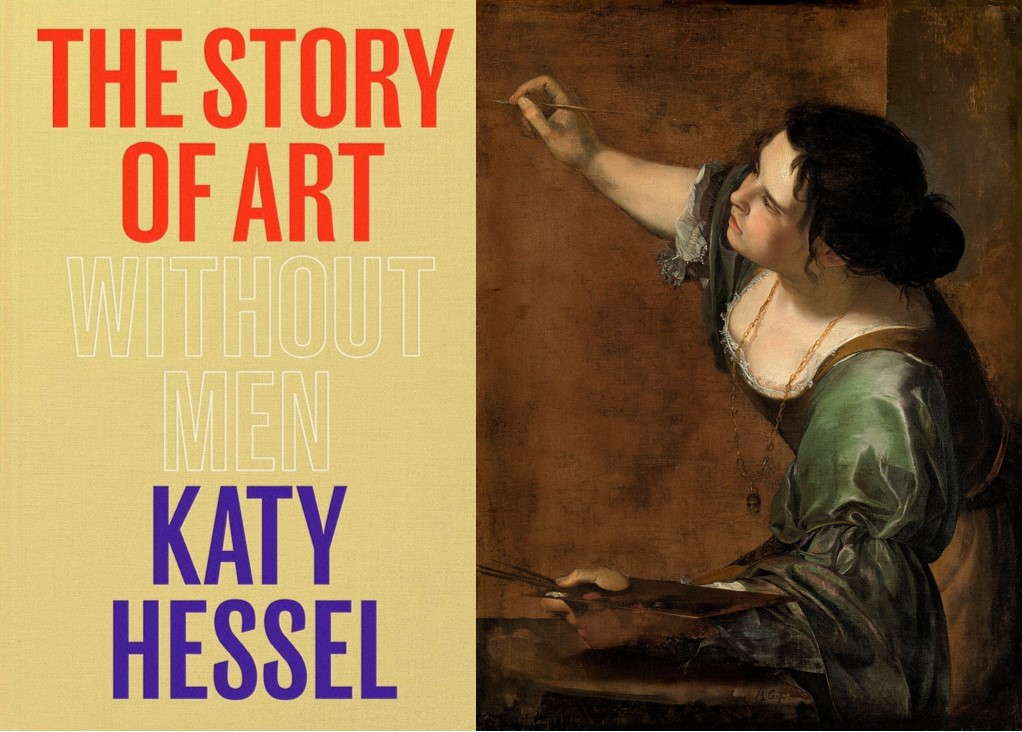
The book cover and to right Self-Portrait as the Allegory of Painting (La Pittura) by Artemisia Gentileschi c.1638-9 (courtesy of Royal Collection Trust / His Majesty King Charles III).
While studying the work of the great American artist Alice Neel at UCL, Katy’s eyes were opened to the gender imbalance in art history and Hessel has since become a true champion of the female artist as well as a guiding force for change.
Founder of @thegreatwomenartists (295k+ followers) and of the podcast of the same name, Hessel’s career has seen her lecture at Cambridge University and the National Gallery, write as a Guardian columnist, present programmes for the BBC and the Royal Academy, and – among many other things – collaborate with Tate Modern and Dior. This year she was also appointed Curatorial Trustee of Charleston, the former home of the Bloomsbury Group in Sussex, which serves as the base for the Charleston Literary Festival and Small Wonder.
All of the above makes Hessel an incredibly busy person, so we were delighted when she agreed to answer some questions for Newlyn School of Art.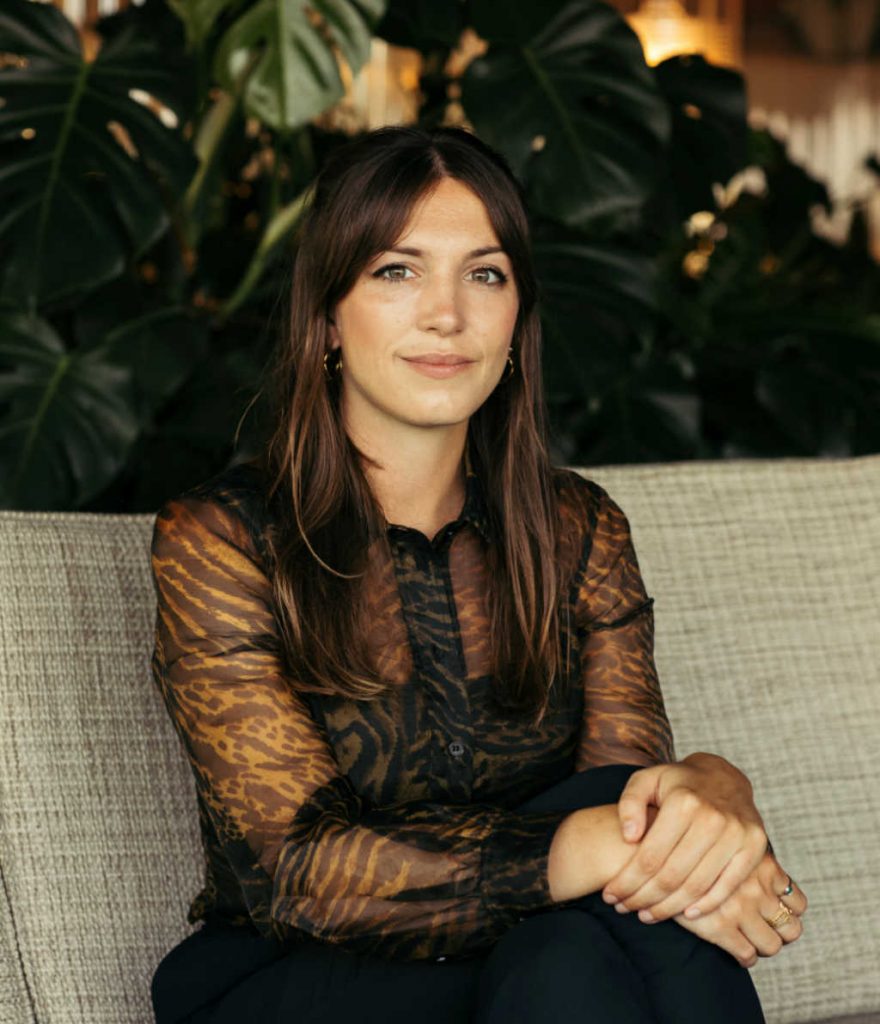
Author Katy Hessel
Why did you write this book?
I wrote The Story of Art (Without Men) because it was an answer to a fantastic book I read growing up called The Story of Art by E.H. Gombrich. It really introduces the reader (regardless of their prior knowledge) to the canon of art history. It spans from prehistoric times right up until when Gombrich was writing in the 1950s. And yet there was one significant flaw: he didn’t include female artists! Only by the 16th edition did he include just one woman. So in writing this book I wanted to address the gender imbalance in the art world.
The book also stems from my Instagram account The Great Women Artists and The Great Women Artists podcast where I champion women artists by interviewing them or interview writers or artists in their career to enhance their visibility. 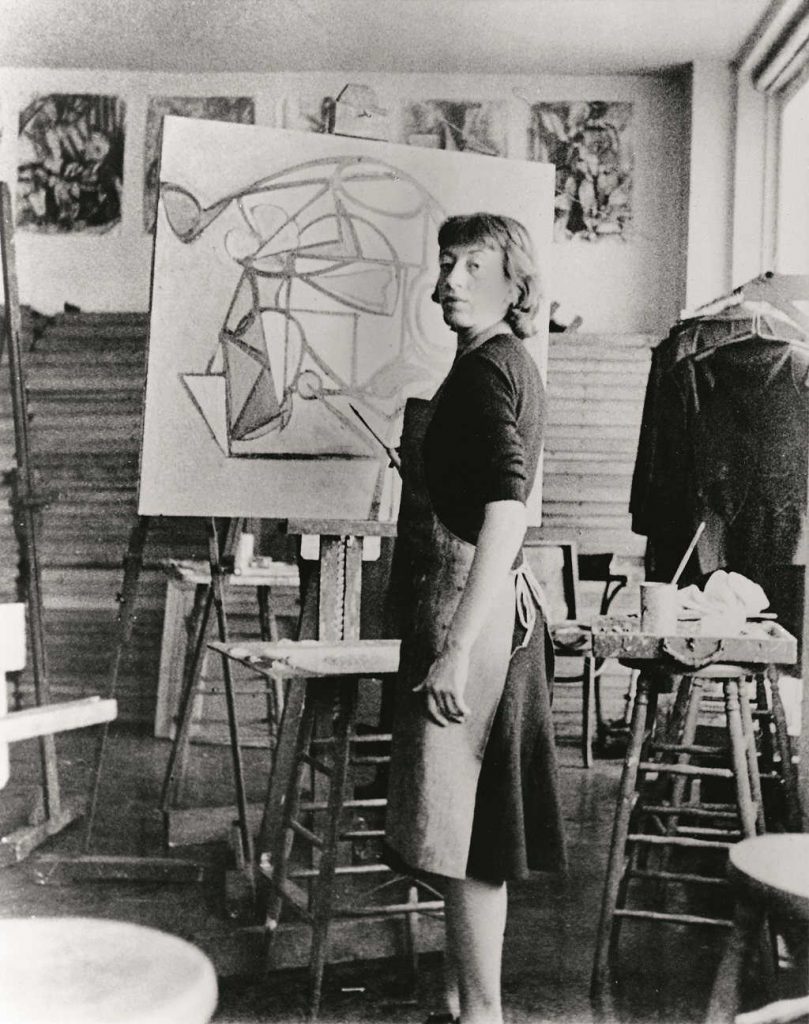
Artist Lee Krasner c. 1940 by unknown photographer. © The Pollock-Krasner Foundation/ARS, NY and DACS, London 2022. Courtesy Kasmin.
Is it only recently that female artists are nearer to parity with men in terms of exposure and opportunities?
Yes. In the last few years we have seen so many art historical corrections take place. Not only is the guard changing in terms of who gets to run museums, but we see greater diversity among curators and those entering these powerful positions than ever before, which has definitely shifted so many things. But I still think there is such a long way to go. For example, of The National Gallery’s collection, only 1% is by female artists. We still have so much to do but as Tracey Emin said, “It’s a good start.”
Why in history have female artists not been given their share of exposure and opportunities?
In terms of educational resources women artists were highly restricted, and particularly to craft and design, genres that were considered lesser by the Establishment. The Royal Academy of Arts and other ‘giant’ museums and schools in London very much favoured large scale grand mythological and biblical subjects, but women were banned from the ‘life room’ until the 1890s and as a result weren’t allowed to paint or draw from the nude life model. This massively restricted their ability to acquire the necessary skills needed to make art.
But so many women got around this by working in genres such as still life and portraiture, by painting themselves, their teachers and sisters… those people they had access to. Fortunately, there were also those rare artists like Artemisia Gentileschi who completely broke free from that. She was particularly lucky because she was brought up in her father’s studio in Rome, so she had access to his paintings, which she could copy.
But did art historians and art dealers, and scholars and curators in the past purely ignore women, or did they do it consciously or unconsciously? That’s my big question! 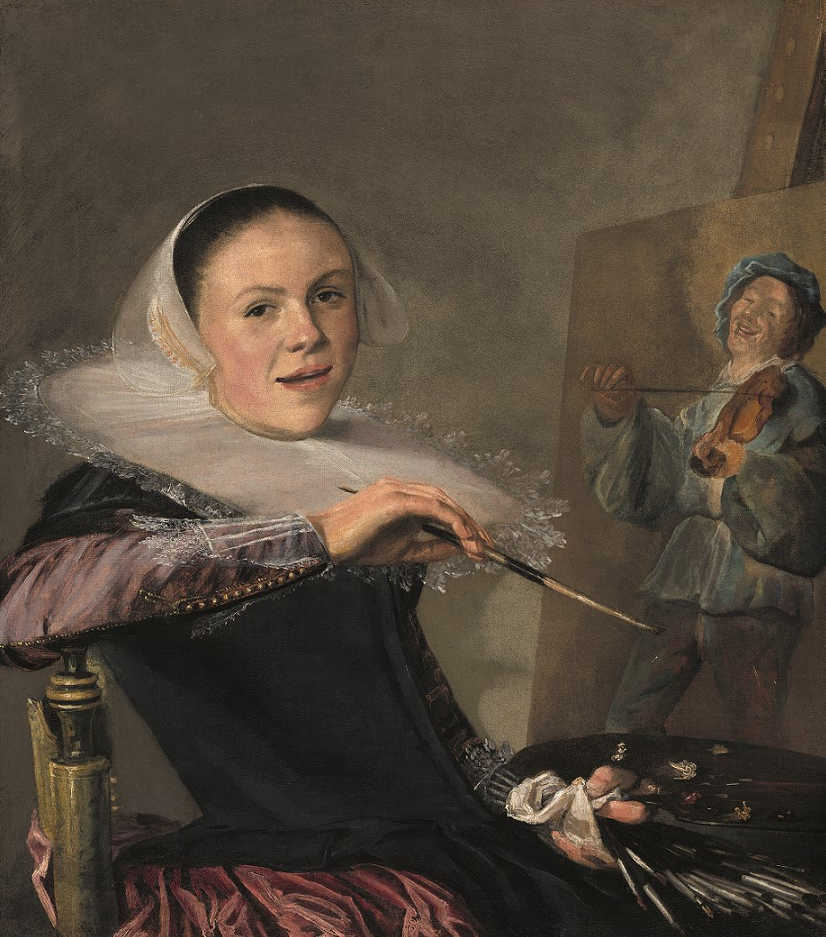
Judith Leyster, Self-Portrait, 1630. Oil on canvas. National Gallery of Art, Washington. Gift of Mr. and Mrs. Robert Woods Bliss, 1949.6.1. Photo: Courtesy National Gallery of Art, Washington.
Who are some key female artists from history who we might not have heard of, and that contemporary artists might find interesting or inspiring?
A good place to start is with Sofonisba Anguissola, who was working in the 1500s. She was an extraordinary portrait painter, who interwove seams of landscape or smaller paintings within her work to show that she was capable of triumphing different genres within a painting. One of my favourites is her self-portrait with Bernardino Campi, which is of her dictating her (male) teacher’s appearance who is in turn dictating her appearance. She’s playing with gender imbalances and is being very clever about it all!
There’s also a fantastic work by Anguissola featuring women having this very conversational game of chess. At the time it was highly advanced not only to show women playing chess and thus spotlighting their intellect, but also to depict a conversational piece showing psychological expression. All of this was extraordinary for its time.
In my exhibition (The Story of Art as it’s Still Being Written) the contemporary artist Celia Paul references Sofonisba Anguissola in her painting ‘Overshadowed’. So that’s a really nice dialogue between those working 500 years ago and those working now.
Henry Garfit, Co-founder and Director of Newlyn Art School once went to a talk by Gombrich (who wrote The Story of Art book mentioned earlier in this Q&A) and when asked why he had almost no female artists in the book he responded “Show me a some good ones and I will put them in.” Henry felt that the implication was that possibly Gombrich actually believed that they never existed. And was left wondering could this be down to the fact that women were not actually encouraged or allowed to paint in past centuries? Or have they just been overlooked?
Both. They were massively restricted in their education and often in their social and economic circumstances too. So many women across the world don’t have access to education. There’s still so much to do. We in the west are lucky that we’re able to go to art school, can have a state funded education, go to our libraries and look at books. But I don’t think Gombrich was looking hard enough, because so many extraordinary female artists existed.
And what does the ‘canon of art’ even mean? Why is an artist deemed great if they paint large scale paintings? Can’t potters be ‘great’? Can’t tapestry weavers be great? Can’t ceramicists be great? So I think it’s partly about what the words ‘good’ and ‘great’ mean. What I want to do with this book is expand the idea of the canon not just globally but also beyond mediums and genres and everything.
Berthe Morisot of the Impressionists, Pauline Boty of the Pop Art movement, Dame Laura Knight… all just as good as their male counterparts but underappreciated?
Berthe Morisot was the first woman of the Impressionists and the only woman in the first ever Impressionist exhibition. I mean, she was extraordinary. She was from quite an upper-class background so again she had to conform to certain social structures. If Berthe wasn’t allowed to go out unchaperoned or take high-speed trains and go to all these places that all her contemporaries like Monet and Renoir did, then she painted the inner lives of the women instead. But she used the style of the Impressionists and was probably one of the most experimental of all of them. For example look at her later work in the 1880s – it’s almost as if the paint is disintegrating into the canvas with these silvery shapes that are almost splinter-like. I don’t think she was recognised enough but when we look at what she did and we look at how she used the only resources available to her, it’s extraordinary.
Similarly with Pauline Boty. You look at Pop Goes The Easel – which is this fantastic documentary style film that she was in about pop artists with Peter Blake and Derek Boshier – and she was arguably by far the most intelligent. She had a radio show on the public airways, where she used to recite feminist monologues – and when we look at her work 50, 60 years on it’s extraordinary because what she’s doing is commenting right there and then on the 60’s pop art movement. And she’s immortalising the likes of Marilyn Monroe in such an interesting way. Had she even seen things like Warhol’s images? I don’t know… but if you look at her in relation to the present day, with for example that recent Marilyn Monroe movie which is filmed from such a male perspective, what Pauline Boty was doing was to look at the inner worlds of women and look at them in a very empathetic way. It’s maybe only now, in the first 20 years of this century, that we have we been able to appreciate her because she was so far ahead of her time.
Are there any female artists out there who – in your opinion – equal the world famous heavy-weights such as da Vinci and Picasso?
Definitely. Artemisa Gentileschi.
And yet I could talk about someone like Georgia O’Keefe, but I could also talk about someone like Agnes Pelton who I think is equally as good, who’s exploring similar sorts of themes in her work about spiritualism, but she hasn’t had the same recognition.
Similarly, when we look at artists who were working at the height of the Paris Avant-garde who have justifiably earned worldwide recognition, we might also ask, what about those working in the Harlem Renaissance who spotlighted African-American narratives and subjects? So ‘what does greatness mean’ is an interesting thing, and my mission with this book is to make these artists who – despite the medium they use – become household names.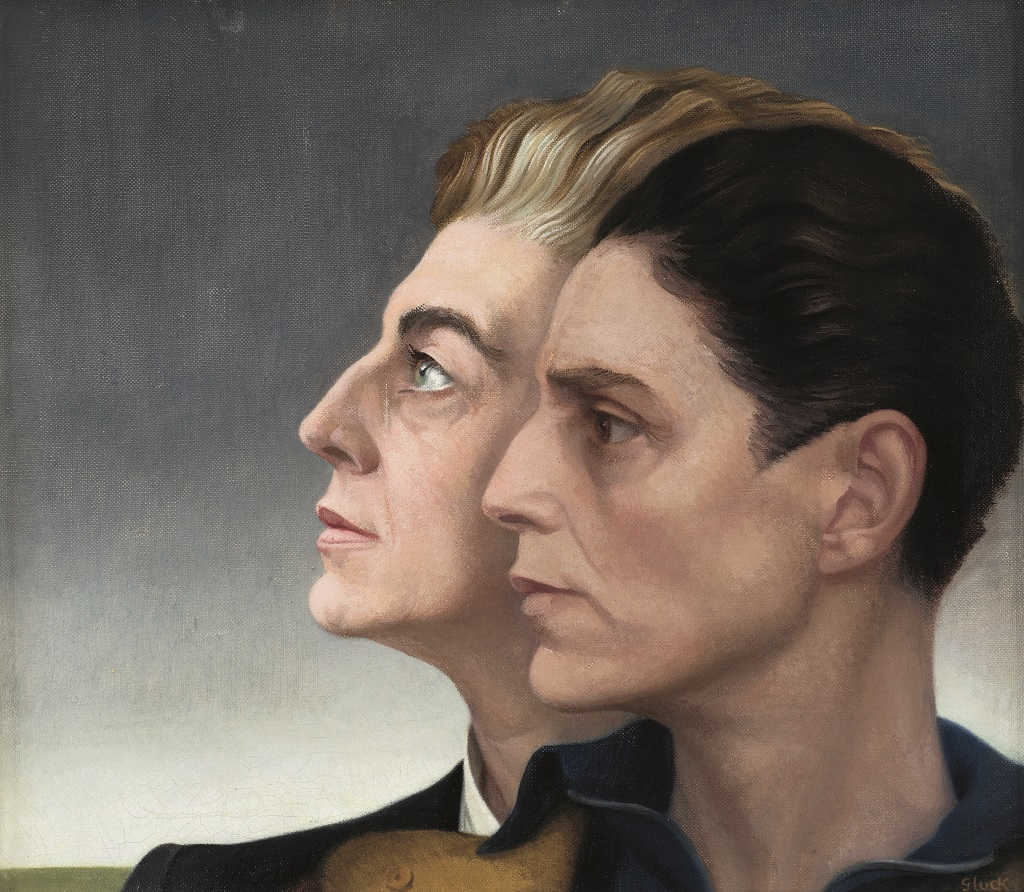
Gluck, Medallion (YouWe), 1936. Private collection. © Gluck Estate. Courtesy The Fine Art Society, London.
Who are your favourite 20th century female artists?
Oh where do I begin? I could literally name about a thousand… Paula Modersohn-Becker, Augusta Savage, Annie Leibovitz, Lottie Laserstein, Gluck, Sonja Delaunay… I mean literally every single one of these artists… And then there are the Surrealists… I mean how can you even choose a favourite Surrealist? How do you choose between Leonor Fini and Dorothea Tanning, Eileen Agar and Lee Miller? They were all extraordinary.
Also Tarsila do Amaral, a great artist coining what Brazilian Modernism was and is today. Frida Kahlo. People like Barbara Hepworth… trail blazers! Lee Krasner. Ruth Asawa who worked with wire. Emma Amos… Faith Rinngold who so brilliantly captured what was happening during the civil rights movement, in that moment ‘right now’, which is such an incredible visualisation of that time. Eva Hesse. I could really name about a thousand so I’ll stop here! I’ll just end with Alice Neel who was one of the great American portrait painters working at the time.
What are contemporary female artists changing about the UK art scene?
I don’t know… because right now we’re still living and breathing this time. So how can we even put into words how this world is changing? But I wanted to end with these three artists who I call the new masters – Flora Yukhnovich, Somaya Critchlow and Jadé Fadojutimi – because they’re using a medium that is rooted in history and has for centuries been used as a way to historicise or memorialise or immortalise.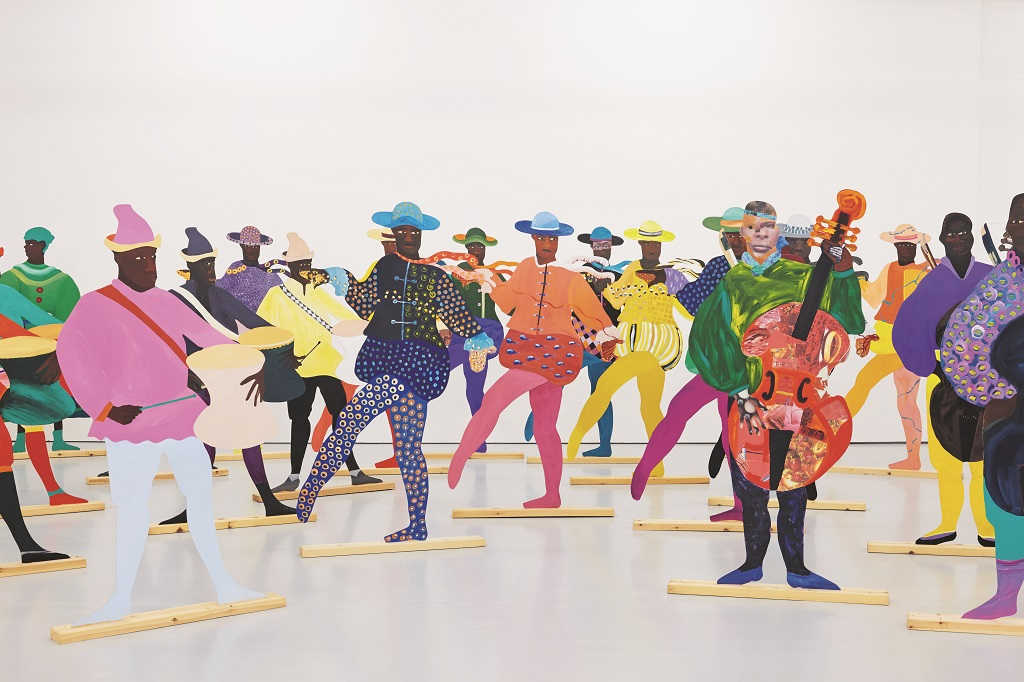
Lubaina Himid, ‘Naming the Money’ 2004. Installation view of Navigation Charts, Spike Island, Bristol, 2017. © Lubaina Himid. Courtesy of the artist, Hollybush Gardens, London and National Museums, Liverpool. © Spike Island, Bristol. Photo: Stuart Whipps.
“Katy Hessel has given us such a gift. Her research is profound, scholarly and wide-ranging, her writing authoritative yet accessible.” – Jessie Burton, author of The Miniaturist
‘This is Tomorrow is the work of an undercover agent… it is a fast-moving and compelling read’ – Dame Phyllida Barlow
You can buy The History of Art (Without Men) at all good bookshops or on the socially conscious bookshop.org
Interview and words by Fanny Johnstone.
We are inviting you to submit your favourite three female artists from history (please send entries to courses@newlynartschool.co.uk). Help us add to our list of over 140 female artists found below.
A list of the female artists suggested by our students and friends:
Winifred Nicholson | Elaine de Kooning | Evelyn De Morgan | Dame Laura Knight | Sonia Delauney | Mary Cassatt | Beatrix Potter | Frida Kahlo | Marie-Gabrielle Capet | Pamela Colman Smith | Beryl Cook | Georgia O’Keefe | Tove Jansson | Tamara de Lempicka | Artemisia Gentileschi | Clarice Cliff | Barbara Hepworth | Gwen John | Berthe Morisot | Maggi Hambling | Bridget Riley | Kathe Kolwitz | Paula Rego | Louise Bourgeois | Margaret MacDonald Mackintosh | Leonora Carrington | Evelyn de Morgan | Gluck | Annie Swynnerton | Althea McNish | Sofonisba Anguissola | Evelyn Dunbar | Phoebe Anna Traquair | Kate Whiteford | Angelina Kaufman | Elizabeth Blackadder | Suzanne Valadon | Niki de Saint Phalle | Elizabeth-Louise Vigee LeBrun | Hannah Hoch | Marianne North | Sofonisba Anguissola | Amy Sherald | Mary Fedden | Sophi Beharrell | Elizabeth Butler | Louisa Starr | Sarah Bernhardt | Elizabeth Thompson | Lavinia Fontana | Hilma af Klint | Cornelia Parker | Tracey Emin | Annette Messager | Jenny Saville | Dod Proctor | Dora Carrington | Rosa Bonheur | Barbara Rae | Joan Eardley | Tirzah Garwood | Carol Rhodes | Helen Frankenthaler | Marlene Dumas | Doris Zinkeisen | Pamela du Boulay | Angelica Kauffmann | Elisabetta Sirani | Betty Kuntiwa Pumani | Edmonia Lewis | Leonor Fini | Lubaina Himid | Maria Cosway | Ramedios Varo | Tamara de Lempika | Elizabeth A Forbes | Lucy Harwood | Sarah Lucas | Tamara Natalie Madden | Mary Moser | Ellen Gallagher | Lynette Yiadom-Boakye | Shanl Rhys James | Elizabeth Siddal | Marie Lucas Robiquet | Ithel Colquhoun | Guerrilla Girls | Ingrid Pollard | Frances MacDonald | Henriette Browne | Mabel Lucie Attwell | Monica Sjoo | Sheila Fell | Prunella Clough | Wilhelmina Barns-Graham | Rebecca Horn | Barbara Kruger | Haidee-jo Summers | Judy Chicago | Roxana Halls | Alice Neel | Claude Cahun | Audrey Walker | Paula Modersohn-Becker | Agnes Martin | Tess Jaray | Dorothea Sharp | Maud Lewis | Augusta Savage | Kiki Smith | Elizabeth Frink | Victoria Crowe | Joan Mitchell | Christy Lee Rogers | Janet Fish | Helen Saunders | Lee Krasner | Sandra Blow | Ana Mendieta | Pauline Boty | Lucie Rie | Maria Sibylla Merian | Anne Redpath | Dorothy Mead | Olga de Amaral | Faith Ringgold | Janet Sobel | Baroness Elsa von Freytag-Loringhoven | Dorethea Tanning | Rose Garrard | Evelyn Williams | Sophie Calle | Kate Cowderoy | Joan Carlile | Gertrude Hermes | Lois Maillou Jones | Helene Schjerfbeck | Anne Desmet | Olga Boznanska | Maria Jerema | Winifred Knights | Celia Paul | Sybil Andrews